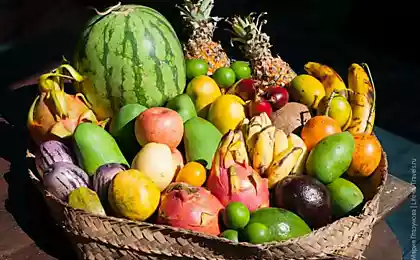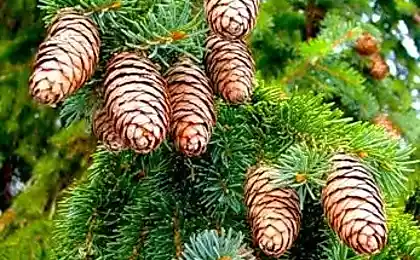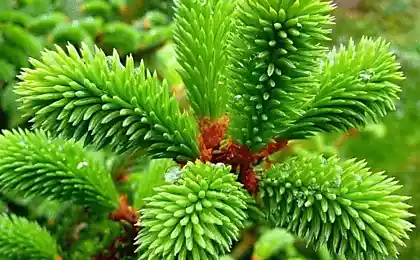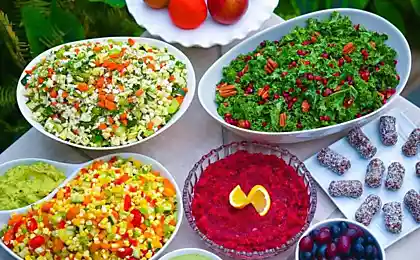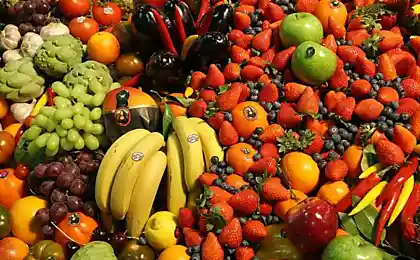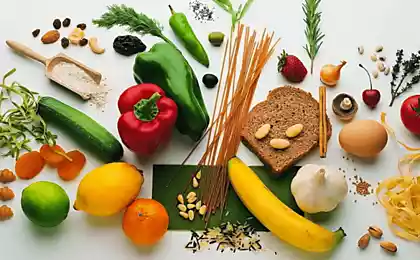1450
Exotic fruits, which you should not eat
In this post will tell you about the fruit that you not only have not eaten, but not even heard of them!
Aki or Blighia tasty
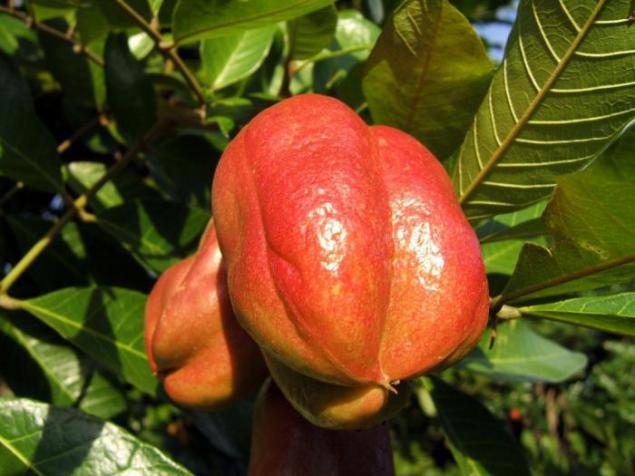
This fruit is sometimes called "vegetable marrow" - because of the shape of its yellowish edible flesh, hiding under the skin. Hailing this fruit from the tropics of West Africa, but eventually he was transferred and began to grow in Jamaica, Haiti and Cuba. He comes in many Caribbean dishes. Say, tastes like a walnut.
Rambutan

Homeland Rambutan - Malay Archipelago, and the name is derived from the Malay word meaning "hairy", and hardly need to explain why. And by a strange hairy appearance at this fruit is tender, juicy and extremely delicious pulp. Those who have tried to describe its taste as sweet and sour, reminiscent of grapes.
Physalis
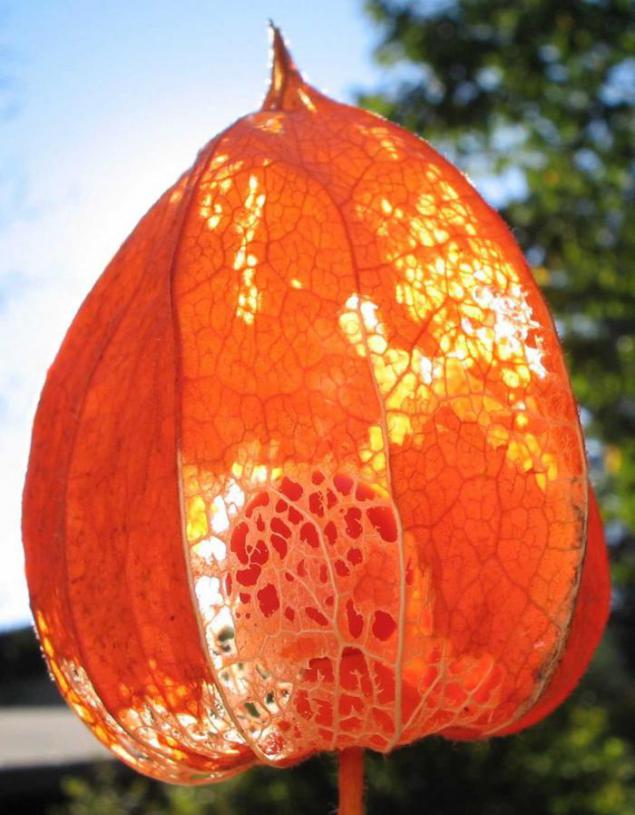
This fruit grows in an unusual, resembling a flashlight casing. He belongs to the family Solanaceae, which means there is a relative of the tomato. Its soft, refreshingly sour taste also reminds tomato and properly used.
Dzhabotikaba
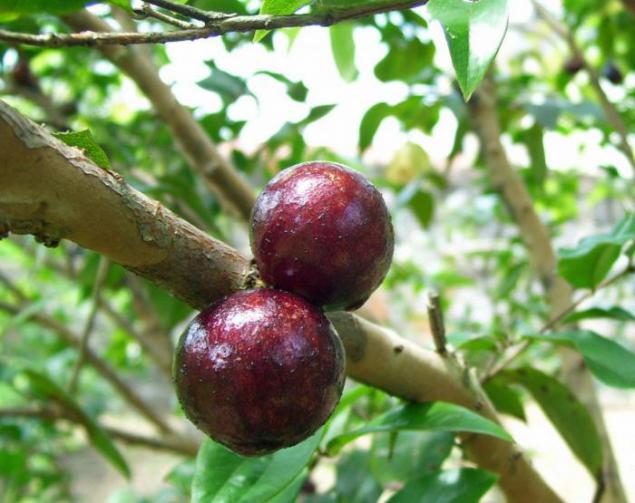
The singularity of this fruit is that it does not grow on a branch, as it should be for each fruit, and right on the bark of a tree, on the trunk. When the tree begins to bear fruit, it seems as if the trunk is covered with purple warts. Use these fruits as well as grapes, that is, wines and liqueurs are prepared (the taste becomes quite exquisite), or eaten fresh.
African horned cucumber
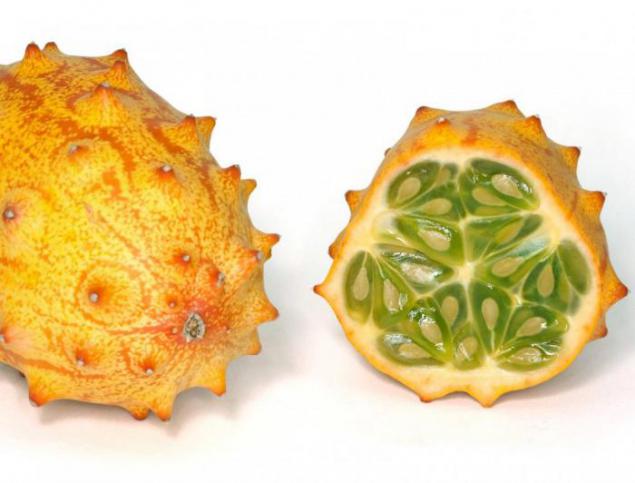
In America, this fruit is called "puffer fruit." His yellow skin is covered with spines, and the interior of his green and juicy. The taste of this fruit is very unusual. Most of all it looks like a mixture of cucumber zucchini, and it contains a huge amount of vitamin C and other nutrients. African horned cucumber homeland is Africa, but now it is grown in many countries, including New Zealand, Australia and Chile.
Durian
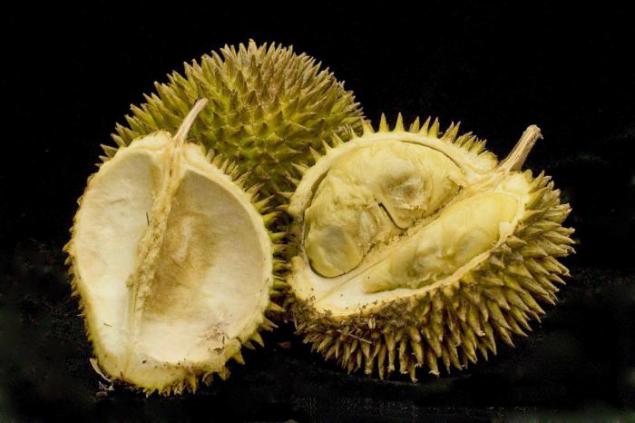
In the south-east Asian durian is revered as the "king of fruits". The famous British naturalist Alfred Russel Wallace (who, irrespective of Darwin formulated his theory of natural selection) described the taste of its flesh as "something like a thick custard with lots of almonds." But durian is famous not only taste, but also the smell, which is compared with sweaty socks and rotten onions. It does not sound very appetizing, but durian lovers it does not bother.
Miracle berry
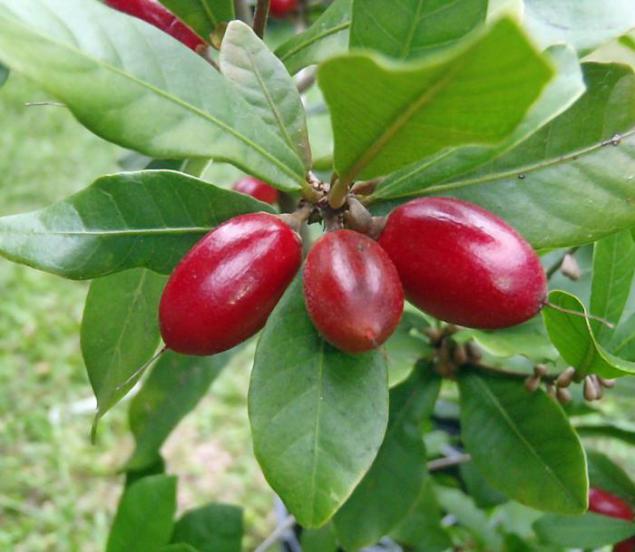
]
Miracle berry grows in West Africa. This naming she deserved because of its ability to change the taste of acidic foods (like lemon and lime). In the berry contains a substance called "Miraculin" which at the time of "disconnects" the taste buds responsible for the perception of sour and bitter tastes, so all that you have not eaten after it will seem as sweet as candy.
Mangosteen

Aromatic pulp mangosteen has a sweet, tart, citrus and peach flavor. His homeland - the tropics of Southeast Asia. At one time this taste so impressed Queen Victoria that she announced a reward of 100 pounds to anyone who takes it a fresh fruit. Makoto mangosteen rind protects quite rigid, which first need to split the knife.
Lansium
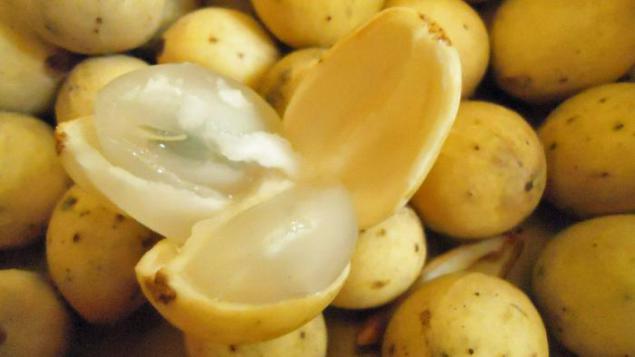
These small, semi-spherical shape of the fruit growing, mainly in Southeast Asia, India and Bhutan, not so long ago, they began to grow, and in Hawaii. Unripe fruits can be quite acidic, but when ripen, become sweet, reminiscent of grapefruit.
Cherimoya
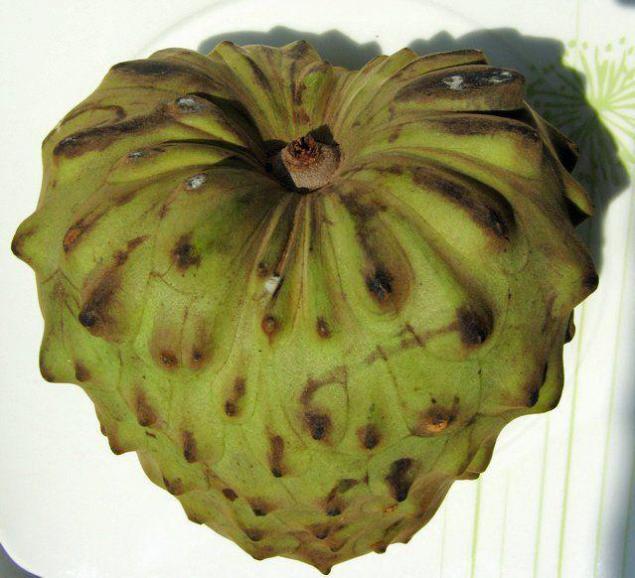
Mark Twain called the cherimoya "the most delicious fruit known to man." Its taste some describe as a cross between a banana and pineapple, others argue that most of all he recalls the taste of chewing gum. Cherimoya are home to the Andes, but it feels good and in a Mediterranean climate, it is now grown in Spain, Italy, California and many other places.
Aguahe
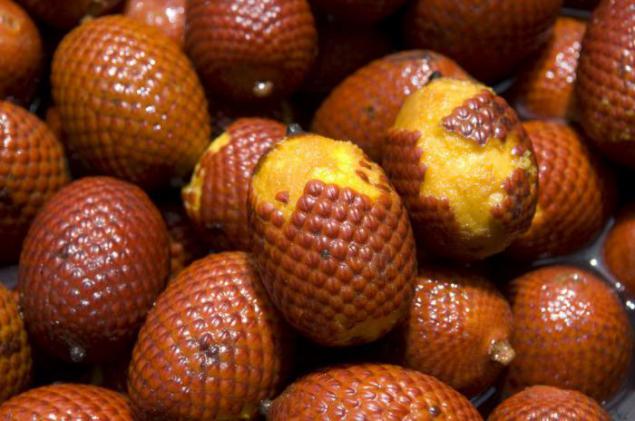
These unusual fruits are covered with reddish scales that need to clear to get to the edible flesh. Aguahe popular in the Amazon jungle, it can serve as an invaluable source of vitamins A and C, and even treatment for burns. Aguahe obtained from a refined exotic wine.
Jackfruit
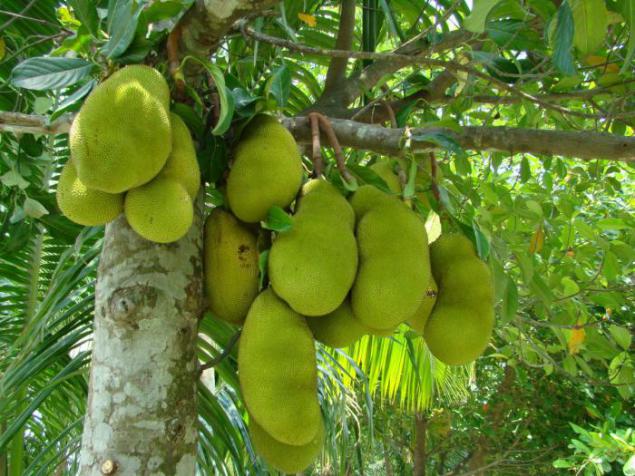
Relative breadfruit, which grow the largest fruit in the world. Weight per fruit can exceed 35 kg. He is considered the national fruit of Bangladesh, but even 6000 years ago it began to grow in India. The pulp from jackfruit oily, rich in fiber and starchy. Usually it is cut into slices and fry, getting crispy chips.
Monstera deliciosa
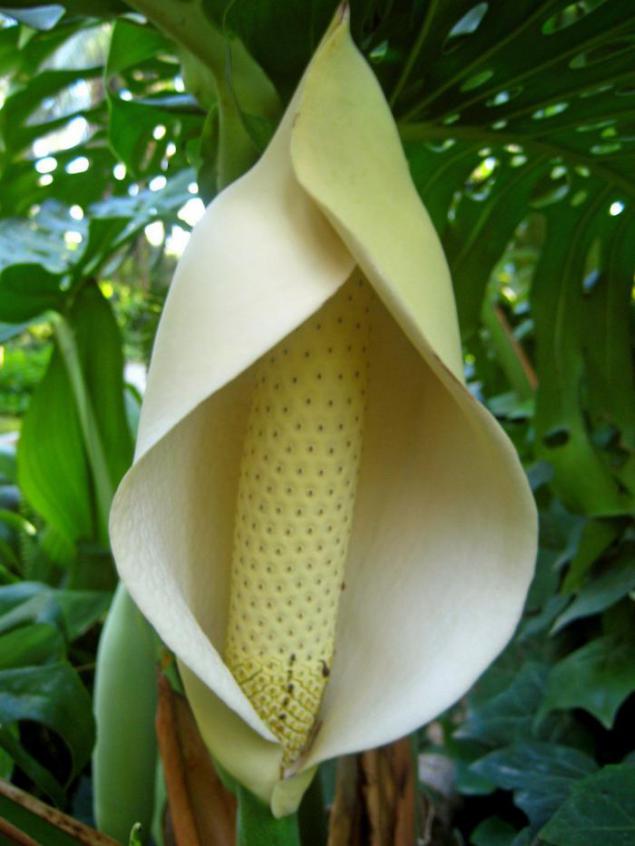
Monstera deliciosa is native to Central America and with the mind is like a half-open ear of corn. In order to fully ripen this fruit takes about a year, and it has an immature dangerous - it can be very toxic. Ready fruits have banana-pineapple flavor.
Cupuaçu
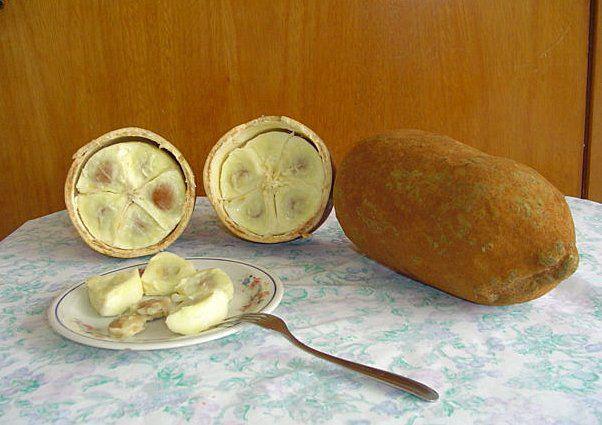
Cupuaçu grows in the forests of the Amazon. The pulp of the fruit flavored with chocolate-pineapple flavor is often used for desserts and all sorts of confectionery. In cupuaçu contains a huge variety of nutrients, so it is often called "superfruits". In addition, the oily flesh of this fruit is often used as a moisturizing cosmetic product.
Pepino
[Img = uploads / 11.2013 / 6269_fruit_16.jpg
Taste pepino is a cross between a melon and pear. This fruit - a relative of Solanaceae, tomato and eggplant. Pepino grows mainly in South America, but now also grown in New Zealand, Turkey and some other regions.
Aki or Blighia tasty

This fruit is sometimes called "vegetable marrow" - because of the shape of its yellowish edible flesh, hiding under the skin. Hailing this fruit from the tropics of West Africa, but eventually he was transferred and began to grow in Jamaica, Haiti and Cuba. He comes in many Caribbean dishes. Say, tastes like a walnut.
Rambutan

Homeland Rambutan - Malay Archipelago, and the name is derived from the Malay word meaning "hairy", and hardly need to explain why. And by a strange hairy appearance at this fruit is tender, juicy and extremely delicious pulp. Those who have tried to describe its taste as sweet and sour, reminiscent of grapes.
Physalis

This fruit grows in an unusual, resembling a flashlight casing. He belongs to the family Solanaceae, which means there is a relative of the tomato. Its soft, refreshingly sour taste also reminds tomato and properly used.
Dzhabotikaba

The singularity of this fruit is that it does not grow on a branch, as it should be for each fruit, and right on the bark of a tree, on the trunk. When the tree begins to bear fruit, it seems as if the trunk is covered with purple warts. Use these fruits as well as grapes, that is, wines and liqueurs are prepared (the taste becomes quite exquisite), or eaten fresh.
African horned cucumber

In America, this fruit is called "puffer fruit." His yellow skin is covered with spines, and the interior of his green and juicy. The taste of this fruit is very unusual. Most of all it looks like a mixture of cucumber zucchini, and it contains a huge amount of vitamin C and other nutrients. African horned cucumber homeland is Africa, but now it is grown in many countries, including New Zealand, Australia and Chile.
Durian

In the south-east Asian durian is revered as the "king of fruits". The famous British naturalist Alfred Russel Wallace (who, irrespective of Darwin formulated his theory of natural selection) described the taste of its flesh as "something like a thick custard with lots of almonds." But durian is famous not only taste, but also the smell, which is compared with sweaty socks and rotten onions. It does not sound very appetizing, but durian lovers it does not bother.
Miracle berry

]
Miracle berry grows in West Africa. This naming she deserved because of its ability to change the taste of acidic foods (like lemon and lime). In the berry contains a substance called "Miraculin" which at the time of "disconnects" the taste buds responsible for the perception of sour and bitter tastes, so all that you have not eaten after it will seem as sweet as candy.
Mangosteen

Aromatic pulp mangosteen has a sweet, tart, citrus and peach flavor. His homeland - the tropics of Southeast Asia. At one time this taste so impressed Queen Victoria that she announced a reward of 100 pounds to anyone who takes it a fresh fruit. Makoto mangosteen rind protects quite rigid, which first need to split the knife.
Lansium

These small, semi-spherical shape of the fruit growing, mainly in Southeast Asia, India and Bhutan, not so long ago, they began to grow, and in Hawaii. Unripe fruits can be quite acidic, but when ripen, become sweet, reminiscent of grapefruit.
Cherimoya

Mark Twain called the cherimoya "the most delicious fruit known to man." Its taste some describe as a cross between a banana and pineapple, others argue that most of all he recalls the taste of chewing gum. Cherimoya are home to the Andes, but it feels good and in a Mediterranean climate, it is now grown in Spain, Italy, California and many other places.
Aguahe

These unusual fruits are covered with reddish scales that need to clear to get to the edible flesh. Aguahe popular in the Amazon jungle, it can serve as an invaluable source of vitamins A and C, and even treatment for burns. Aguahe obtained from a refined exotic wine.
Jackfruit

Relative breadfruit, which grow the largest fruit in the world. Weight per fruit can exceed 35 kg. He is considered the national fruit of Bangladesh, but even 6000 years ago it began to grow in India. The pulp from jackfruit oily, rich in fiber and starchy. Usually it is cut into slices and fry, getting crispy chips.
Monstera deliciosa

Monstera deliciosa is native to Central America and with the mind is like a half-open ear of corn. In order to fully ripen this fruit takes about a year, and it has an immature dangerous - it can be very toxic. Ready fruits have banana-pineapple flavor.
Cupuaçu

Cupuaçu grows in the forests of the Amazon. The pulp of the fruit flavored with chocolate-pineapple flavor is often used for desserts and all sorts of confectionery. In cupuaçu contains a huge variety of nutrients, so it is often called "superfruits". In addition, the oily flesh of this fruit is often used as a moisturizing cosmetic product.
Pepino
[Img = uploads / 11.2013 / 6269_fruit_16.jpg
Taste pepino is a cross between a melon and pear. This fruit - a relative of Solanaceae, tomato and eggplant. Pepino grows mainly in South America, but now also grown in New Zealand, Turkey and some other regions.


